Easy Tips for Proper Boat Maintenance
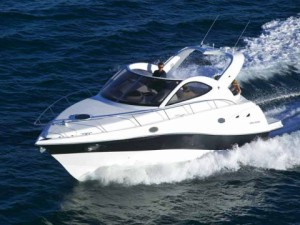
You could purchase the world’s toughest boats, but it doesn’t mean that you can get away without taking care of it. To keep your vessel sea worthy, you have to put a little bit of elbow grease and care into your boat. Here are some easy tips:
Cleaning & Care
Wash your boat regularly. Not only does routine cleaning facilitate a more pleasant and organized environment, but it also goes a long way towards counteracting the long-term effects of environmental wear and tear. Waxing and use of anti-fouling paint can also help protect your boat from the elements.
Checklists
Keep a checklist that includes everything from boat motor maintenance and winterization to boat trailer maintenance. You also want to be sure to check your fluid levels on a regular basis, and be sure that you have a good amount of Yamaha 2W oil.
Proper Mooring
One of the most common ways a boat can start to show scratches and damage is not only from when it’s in use, but from when it’s being docked. Make sure lines are securely fastened in place, neatly coiled and do not show signs of breakage.
Battery Care
Depending on the type of battery your boat uses, check to ensure that it is properly charged and that it has the correct fluid levels. Also be sure to keep your battery clean, as dampness and dirt can also drain your battery.
Electrical Components
Many boating failures occur as a result of corroded electrical systems, so keeping electrical components dry should be a regular part of your boat maintenance routine.
Consider a Boat Cover
Making an investment in a boat cover can help keep your boat clean and free of a variety of contaminants that aren’t just related to dirt or water, falling leaves and bird droppings can also cause a lot of damage if left unchecked.


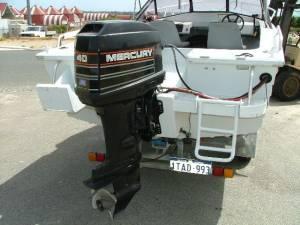 Whether you are an avid boater or just occasionally go out for recreation, it is important to understand the basics of boat maintenance. While the task of performing repairs on your craft may seem daunting, most preventative measures and basic maintenance is easy for anyone with a set of tools. By taking a little time to inspect your boat after every outing, you can avoid having to dole out big bucks later.
Whether you are an avid boater or just occasionally go out for recreation, it is important to understand the basics of boat maintenance. While the task of performing repairs on your craft may seem daunting, most preventative measures and basic maintenance is easy for anyone with a set of tools. By taking a little time to inspect your boat after every outing, you can avoid having to dole out big bucks later.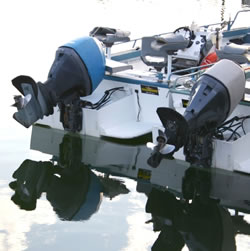 As most people can deduce, the most important aspect of achieving longevity from your watercraft is proper maintenance. Not only will this add years to the life of your boat, but it will also improve the performance when it’s in use. How you care for your boat will largely depend on where you keep it, whether that is tied to the dock or safely ashore.
As most people can deduce, the most important aspect of achieving longevity from your watercraft is proper maintenance. Not only will this add years to the life of your boat, but it will also improve the performance when it’s in use. How you care for your boat will largely depend on where you keep it, whether that is tied to the dock or safely ashore.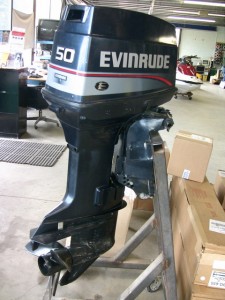 In a perfect world, we would all be able to afford precisely what our hearts desire. There wouldn’t be much diversity in the boating world, as we’d all be cruising past each other in top-of-the line boats with high-end outboard motors attached to the transom. Just think of all the luxury and convenience we would experience on a daily basis. Unfortunately, we would also miss out on many of the great stories that make boating so much fun. Old, well-worn boats have a certain character that their new counterparts lack. To an extent, the same could be said for outboards themselves.
In a perfect world, we would all be able to afford precisely what our hearts desire. There wouldn’t be much diversity in the boating world, as we’d all be cruising past each other in top-of-the line boats with high-end outboard motors attached to the transom. Just think of all the luxury and convenience we would experience on a daily basis. Unfortunately, we would also miss out on many of the great stories that make boating so much fun. Old, well-worn boats have a certain character that their new counterparts lack. To an extent, the same could be said for outboards themselves.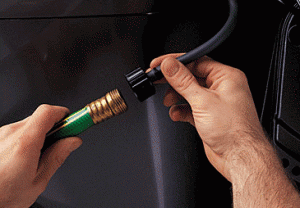 For most fishermen and fans of recreational water sports, a boat represents one of the most serious investments in one’s life. It generally comes down to a house, a car, and then a boat – in that order. So, assuming your boat is the third biggest financial investment in your life, doesn’t it deserve the sort of time and energy you put into your other prized possessions? After all, your home might be remodeled, repainted or at least cleaned each spring. And you wouldn’t think of driving your car much more than 3,000 miles without an oil change, would you?
For most fishermen and fans of recreational water sports, a boat represents one of the most serious investments in one’s life. It generally comes down to a house, a car, and then a boat – in that order. So, assuming your boat is the third biggest financial investment in your life, doesn’t it deserve the sort of time and energy you put into your other prized possessions? After all, your home might be remodeled, repainted or at least cleaned each spring. And you wouldn’t think of driving your car much more than 3,000 miles without an oil change, would you?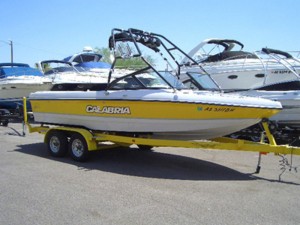 Now that winter is on the way and likely to stay in parts of America for the next several months, many boaters enter a planning stage. Since they cannot get out on the lake to go fishing or just to cruise around aimlessly, a number of thoughts begin to enter their heads. Foremost among these is the question of whether to buy a new boat. Every spring like clockwork, thousands of people show up at marinas and dealerships ready to make such a purchase.
Now that winter is on the way and likely to stay in parts of America for the next several months, many boaters enter a planning stage. Since they cannot get out on the lake to go fishing or just to cruise around aimlessly, a number of thoughts begin to enter their heads. Foremost among these is the question of whether to buy a new boat. Every spring like clockwork, thousands of people show up at marinas and dealerships ready to make such a purchase.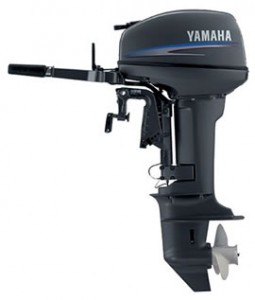 Since their introduction in the early 1900s, outboard motors have revolutionized the way in which we think about boating. Prior to that, boaters and fishermen were largely dependent on the direction of wind or – for those who felt like using oars – brute force. Outboards have taken the focus of our attentions of locomotion, allowing us to think about catching fish or just enjoy the scenery.
Since their introduction in the early 1900s, outboard motors have revolutionized the way in which we think about boating. Prior to that, boaters and fishermen were largely dependent on the direction of wind or – for those who felt like using oars – brute force. Outboards have taken the focus of our attentions of locomotion, allowing us to think about catching fish or just enjoy the scenery.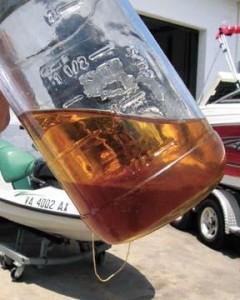 As many boaters know, the Environmental Protection Agency has been cracking down of production of inefficient vehicles in recent years – whether they are designed to drive along roads or motor through a waterway. In some respects, the influx of restrictions and guidelines has been a good thing. After all, most boaters want to make as little lasting environmental impact as possible as they go about their hobby.
As many boaters know, the Environmental Protection Agency has been cracking down of production of inefficient vehicles in recent years – whether they are designed to drive along roads or motor through a waterway. In some respects, the influx of restrictions and guidelines has been a good thing. After all, most boaters want to make as little lasting environmental impact as possible as they go about their hobby.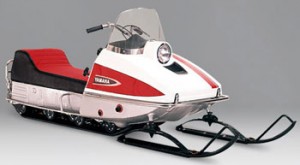 The first snowmobile-esque vehicle to be manufactured was intended for military and police transportation. In the mid to late ’50s, Bombardier created a rudimentary snow track machine capable of holding up to a dozen people. Needless to say, this machine bore little resemblance to the sleek, sporty recreational sleds of today. Bombardier released a more compact snowmobile in 1959; for the first time, such a machine was meant for public use.
The first snowmobile-esque vehicle to be manufactured was intended for military and police transportation. In the mid to late ’50s, Bombardier created a rudimentary snow track machine capable of holding up to a dozen people. Needless to say, this machine bore little resemblance to the sleek, sporty recreational sleds of today. Bombardier released a more compact snowmobile in 1959; for the first time, such a machine was meant for public use.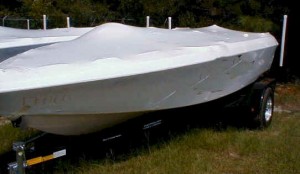 As much as we might hate to admit it, most anglers are faced with an offseason that lasts at least several months. When spring comes around, we can start our love affair with the fishing boat all over again. Until then, it’s up to us to winterize and find other ways to pass the time – such as snowmobiling. But before you hop on that sled, let’s take some time to ensure that you’ve done all you can to winterize the boat effectively.
As much as we might hate to admit it, most anglers are faced with an offseason that lasts at least several months. When spring comes around, we can start our love affair with the fishing boat all over again. Until then, it’s up to us to winterize and find other ways to pass the time – such as snowmobiling. But before you hop on that sled, let’s take some time to ensure that you’ve done all you can to winterize the boat effectively. Today we conclude our week-long look at snowmobiles. It all began Monday with an exploration of a typical sled’s drive system. From there, we compared and contrasted snowmobile tracks with those of a tank. Yesterday we posted some brief thoughts on the environmental impact of snowmobiling and the importance of replenishing
Today we conclude our week-long look at snowmobiles. It all began Monday with an exploration of a typical sled’s drive system. From there, we compared and contrasted snowmobile tracks with those of a tank. Yesterday we posted some brief thoughts on the environmental impact of snowmobiling and the importance of replenishing  In the past few days our discussion of snowmobiles has run the gamut from power systems to track mechanics and steering. Today, it’s time to take a step back from the nuts and bolts to see the forest for the trees. Just what are the environmental implications of recreational sleds, and what plans are in the works to increase engine efficiency? Unlike the environmental effects of automobiles and boats, those of snowmobiles remain understudied and to some extent uncertain.
In the past few days our discussion of snowmobiles has run the gamut from power systems to track mechanics and steering. Today, it’s time to take a step back from the nuts and bolts to see the forest for the trees. Just what are the environmental implications of recreational sleds, and what plans are in the works to increase engine efficiency? Unlike the environmental effects of automobiles and boats, those of snowmobiles remain understudied and to some extent uncertain.